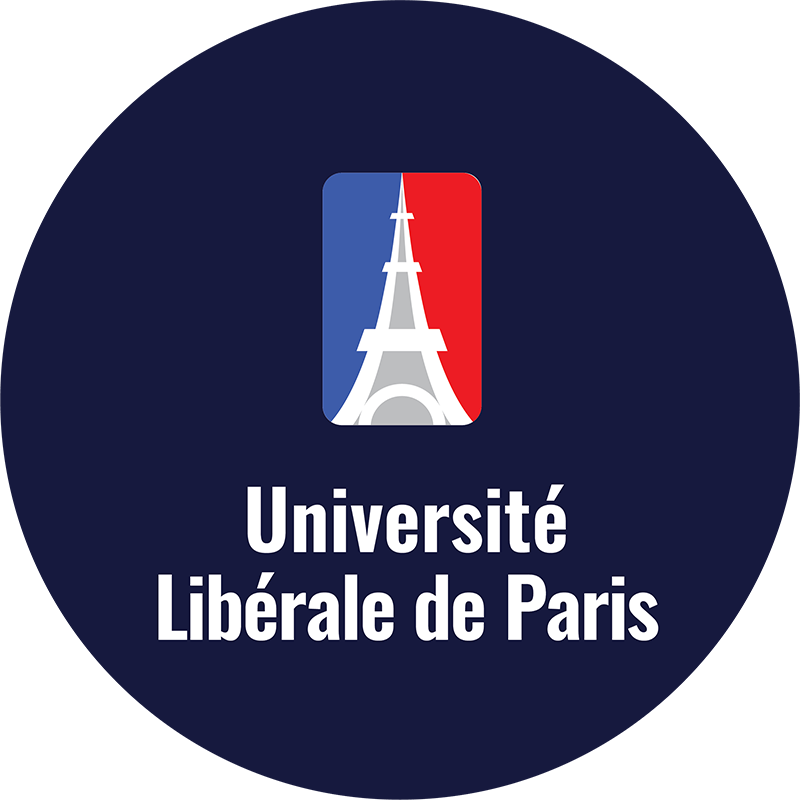
Micro Master’s Degree in Strategic Management
Micro Master's Degree in Strategic Management
CÔNG NHẬN NĂNG LỰC LEVEL 7 THEO KHUNG NĂNG LỰC CHÂU ÂU EQF
Mục đích của chương trình Micro Master’s Degree in Strategic Management (Level 7 EQF) nhằm giúp học viên có được kiến thức về chiến lược và điều chỉnh mô hình quản lý, khám phá kế hoạch chiến lược, đề xuất các phương án chiến lược, phát triển kế hoạch, thực hiện chúng, tiến hành thay đổi tổ chức cũng như trau dồi khả năng lãnh đạo.
Micro Master’s Degree được công nhận tương đương với Level 7 EQF (Thạc sĩ) theo khung năng lực Châu Âu. Học viên sau khi tốt nghiệp có thể tiếp cận nhanh chóng vào môi trường công việc; và có thể chuyển 20 tín chỉ và toàn bộ học phí sang các chương trình Thạc sĩ của Paris-U.
Programs in details
Learning Outcomes:
1. Be able to analyse key external influences on an organisation’s strategy.
1.1 Critically evaluate the position of an organisation in its current market.
1.2 Critically analyse the effects of existing plans on an organisation.
2. Be able to appraise strategic options for an organisation
2.1 Critically explore the relationship between, corporate, business and operational strategies.
2.2 Apply strategic models and tools to develop strategic options for an organisation.
2.3 Evaluate strategic options for an organisation.
3. Be able to evaluate various tools and approaches to a strategy implementation plan.
3.1 Create a relevant vision, mission and strategic goals for an organisation.
3.2 Propose a suitable structure for an organisation that fits a strategic plan.
3.3 Create a resourced strategy implementation plan.
4. Be able to develop and implement a strategic organisational change management plan.
4.1 Apply force field analysis to effectively distinguish forces of change.
4.2 Critically evaluate various change management models.
4.3 Identify relevant leadership and change agent skills to implement a strategic change in an organisation.
5. Be able to monitor and control the implementation of strategic plans.
5.1 Develop a monitoring and control system for the implementation of strategic plans.
5.2 Design key success indicators in order to monitor the implementation of the strategic plan.
5.3 Distinguish potential risks during implementation.
5.4 Review the effectiveness of the strategic plan.
Topics:
Explaining the importance of scanning business environments in making strategic decisions of organisation.
Business environment e.g. definition, features, characteristics, types; distinctions between culture and organisational environment; key components of organisational environment; organisational environment basics; internal environment e.g. working capacities, employment relations, job satisfaction; external factors e.g. beneficiaries identification, consumer group demands; ways to meet those demands; contractors; stakeholders; shareholders; suppliers; general workforce; competitor success directions; links of influential factors e.g. social, political, technological; organisational commitment e.g. short term, medium and long term; competitor analysis; designing of products or services; influence measurement; organisational environment improvement.
Using a variety of tools to critically analyse external business environment:
Course Coverage:
Business environment dynamics e.g. definition, characteristics, changes; basics of business environment; organisational environment e.g. benchmark, liability, elasticity, intelligibility, commitment of team, management practices impact; effectiveness and efficiency effects; tools of analysis; threats and opportunities analysis; SWOT (strengths, weaknesses, opportunities, threats) analysis; market analysis, consumer survey; competitor identification; market research; data and information analysis.
Using a variety of tools to critically analyse internal business environment:
Course Coverage:
Internal organisational environment e.g. definition, types, features and changes; internal management analysis; employee and management review; efficient communication rationale; strength analysis; weaknesses analysis; resource analysis; pricing strategies; strategic drift; product analysis; product life cycle analysis.
To review the position of an organisation in its current market:
Market situation analysis; organisational position measurement; strategic business planning tools; e.g. SWOT (strength, weakness, opportunity and threats) analysis; Porter’s Five Forces Analysis; value chain analysis; Boston growth-share (BCG) matrix; market equilibrium; market share; sustainable competitive advantage.
To analyse the effects of exiting plans on organisation:
Organisational planning effects; organisational agreement between several organisations; communication with stakeholders; organisational planning development; objectives led management; guidelines; action planning; strategic and structure fit; Business Process Re- engineering; performance appraisal; policy development; systems of communication; realignment and focus.
Identify and analyse mandatory competency and competitive advances of an organisation:
Competitive advantage identification; economies of scope and scale; product or service life measurement; internal statistics and surveys; measures for monitoring and evaluating; emergent and unrealised strategy; globalisation effects; resources analysis; mandatory skills and competences; experience curves; comparative analysis.
Discussing relationship between, corporate, business and operational strategies:
Strategic relationships e.g. concepts, application and changing trends; corporate strategies; business strategies; operational strategies; effective communication; strategy formulation; strategic drift; strategic options review; benchmarking; competitor analysis; benefit-cost analysis; information review; organisational value consistency; position in markets; market share; globalisation effect; impacts of technological advancements.
Use various models and tools to develop strategic options for an organisation:
Strategic models, e.g. identification, uses and effectiveness; Mintzberg’s strategies e.g. emergent and deliberate; Ansoff matrix strategies; balanced mandatory card analysis; sensitivity analysis; organisational integration; merger and acquisition; gap analysis; product portfolio.
Analyse and decide strategic and business strategic options:
Strategic options e.g. basics and organisation led applications; potential option review; business ethics; good practices; effective participation of stakeholders; diversity management; organisational environment consideration; awareness raising; objectives settings; strategic alliance; benchmarking; leadership.
Developing appropriate vision, mission and strategic goals for an organisation:
Situational analysis; setting vision and mission targets; understanding organisational values; business environment outlining; conceptualising stakeholders.
Proposing a suitable structure: stakeholders:
identification, role analysis; comprehensive target setting for a business organisation; motivation to participate in strategic planning; strategy formulation; strategy implementation; monitoring and evaluation of stakeholders’ performance.
Developing an agreed strategy plan that addresses all resource implications due to new action plan:
Organisational culture analysis; understanding basic values of a business organisation e.g. cultural, ethical, social, economic, business; SMART (specific, measurable, achievable, realistic, time-based) target selection; resource audit; risk analysis.
Carrying out force field analysis:
Organisational changes e.g. definitions, processes, patterns; the identification of change forces; roles of change forces; factor identification; impact of globalisation.
Using various change management models:
Change management models e.g. identification, selection and use; in order to implement any change in an organisation; Lewin’s Change Management Model; McKinsey 7-S Model; Kotter’s 8 Step Change Model.
Acquiring leadership and change agent skills:
Change agent skills e g, identification, appropriate selection and application; implementing a strategic change in an organisation; right attitude; appropriate knowledge; leadership and skills.
To develop a time schedule for implementation of the plans:
Time requirement for planning implementation; time allocation for planning; time management; time scheduling; planning implementation timetable.
To develop key success factors in order to monitor the implementation of the strategic plan:
Success factors definition; success factors identification; successful strategic plan monitoring; planning implementation; evaluation and monitoring of control system; cascading and dissemination process.
To analyse potential risk:
Risks e.g. definitions, features, identification and relevancies in diverse circumstances; implementation risks; implementation risks avoidance; contingency planning; contingency corrective development; risk preventive actions.
Indicative reading list
Core texts:
- Johnson, G. and Scholes, K. (2017) Fundamentals of Strategy. Pearson Ltd.
- Gupta, S. and Starr, M. (2014) Productions and Operations Management Systems. Boca Raton, FL: CRC Press.
Additional reading:
- Barney, J. (2010) Gaining and Sustaining Competitive Advantage. New York: Pearson Education.
- Cusumano, M. A. and Markides, C. (2001) Strategic Thinking for the Next Economy. Mason, OH: Cengage Learning EMEA.
- De Wit, B. and Meyer, R. (2004). Strategy: Process, Content, Context. Stamford, CT: Cengage Learning EMEA.
- Finlay, P. N. (2000). Strategic Management: An Introduction to Business and Corporate Strategy. Harlow: Prentice Hall.
- Goold, M., Campbell, A. and Alexander, M. (1994) Corporate-level Strategy: Creating Value in the Multibusiness Company. New York: John Wiley and Sons Ltd.
- Grant, R. (2010) Contemporary Strategy Analysis. Hampshire: John Wiley and Sons.
- Gratton, L. (2000) Living Strategy: Putting People at the Heart of Corporate Purpose. Harlow: Financial Times/Prentice Hall.
- Harrison, J. S. (2002) Strategic Management of Resources and Relationships: Concepts and Cases. Hampshire: John Wiley and Sons.
- Hill, C., Jones, G. and Schilling, M. (2013) Strategic Management: Theory: An Integrated Approach. Stamford, CT: Cengage Learning.
- Johnson, G., Scholes, K. and Whittington, R. (2008) Exploring Corporate Strategy. Harlow: Financial Times/Prentice Hall.
- Johnson, G. & Scholes, K. (2000) Exploring Public Sector Strategy. Harlow: Financial Times/Prentice Hall.
- Kaplan, R. & Norton, D. (2000) The Strategy-focused Organization: How Balanced Mandatory Card Companies Thrive in the New Business Environment. Massachusetts: Harvard Business School Press.
- Lynch, R. (2005) Corporate Strategy. Harlow: Financial Times/Prentice Hall.
- McGee, J., Thomas, H. and Wilson, D. (2005) Strategy: Analysis and Practice. New York: McGraw-Hill Higher Education.
- Mintzberg, H. (2000) The Rise and Fall of Strategic Planning. Harlow: Financial Times/Prentice Hall.
- Mintzberg, H., Ahlstrand, B. and Lampel, J. (2008). Strategy Safari: Your Complete Guide Through the Wilds of Strategic Management. Harlow: Financial Times/Prentice Hall.
- Pettigrew, A. M., Thomas, H. and Whittington, R. (eds.) (2006) The Handbook of Strategy and Management. London: Sage.
- Stacey, R. D. (2010) Strategic Management and Organisational Dynamics. Harlow: Financial Times/Prentice Hall.
Journals/newspapers:
- The Journal of Marketing
- The European Journal of Marketing;
- The Journal of Marketing Management;
- • Academy of Management Journal;
- British Journal of Management;
- California Management Review;
- European Management Journal;
- Harvard Business Review;
- Journal of Business Strategy;
- Journal of Management Studies;
- Long Range Planning;
- MIT Sloan Management Review;
- Strategic Change;
- Strategy and Leadership;
Websites:
- www.sps.org.uk Strategic Planning Society;
- www.ft.com Financial Times;
- www.managers.org.uk Chartered Management Institute
Để đăng kí tham gia khóa học, học viên cần đạt 1 trong những điều kiện sau:
- Đã có bằng Cử nhân các chuyên ngành từ các đại học được kiểm định hoặc bằng Level 6 theo hệ EQF hoặc tương đương.
- Với ứng viên có bằng đại học nội địa chưa có kiểm định quốc tế sẽ phải dựa vào chính sách chương trình APEL.Q của Université Libérale de Paris (Paris-U) để tuyển sinh.
- Trên 21 tuổi
Lưu ý: Université Libérale de Paris (Paris-U) bảo lưu quyền quyết định tiếp nhận hay không tiếp nhận sau khi bộ phận tuyển sinh đã xem xét kỹ lưỡng hồ sơ của từng ứng viên để đảm bảo ứng viên có thể đạt được nhiều lợi ích và kiến thức khi tham gia chương trình. Paris-U không chấp nhận bằng cấp đầu vào từ các trường đại học giả mạo và các trường đại học thuộc nhóm Diploma Mills.
Yêu cầu tiếng Anh
Ứng viên không đến từ những quốc gia sử dụng tiếng Anh là ngôn ngữ chính phải cung cấp chứng chỉ về trình độ tiếng Anh.
- Tiếng Anh đạt tối thiểu khung năng lực CEFR (Common European Framework of Reference) ở mức B2 hoặc tương đương.
- TOEFL tối thiểu 101 điểm hoặc IELTS 6.5; Nói và viết phải đạt từ 6.5 hoặc tương đương.
Sau khi tốt nghiệp, học viên nhận được:
- Micro Master Degree in Strategic Management từ Université Libérale de Paris bản điện tử.
- Micro Master Degree in Strategic Management từ Université Libérale de Paris bản cứng chuyển về nhà.
- Giấy công nhận Accreditation of Prior Experimental Learning for Qualification (APELQ) từ Paris-U với số tín chỉ và học phí có thể tích luỹ.
- Xác nhận chuyên gia Level 7 Certified in Strategic Management từ Paris-U
Vì chương trình được kiểm định và công nhận nên học viên có thể dễ dàng sử dụng chứng chỉ trong các môi trường làm việc và có nhiều cơ hội thăng tiến trong sự nghiệp. Trong trường hợp muốn học lấy bằng đại học, học viên có thể chuyển đổi toàn bộ tín chỉ và toàn bộ học phí khi tham gia chương trình tại Paris-U.
Micro Master Degree đạt cấp độ Level 7 theo khung năng lực Châu Âu EQF tương ứng với:
- Level 7 certificate of Regulated Qualification Framework (RQF) of UK
- Level 10 certificate of Scottish Credit and Qualifications Framework (SCQF)
- Level 7 certificate of Credit and Qualifications Framework (CQFW)
- Level 7 certificate of European Qualifications Framework (EQF)
- Level 9 certificates of the Australian Qualifications Framework (AQF)
- Level 7 certificate of ASEAN Qualifications Reference Framework (AQRF)
- Level 9 certificate of the African Continental Qualifications Framework (ACQF)
Học viên có thể chuyển tất cả tín chỉ và toàn bộ học phí đã đóng khi chuyển tiếp sang các chương trình của Paris-U nếu muốn lấy bằng thạc sĩ chính thức.
Số tín chỉ có thể tích luỹ:
Học viên được tích luỹ được 20 credits khi tham gia chương trình Master of Business Administration (MBA). Vui lòng tham khảo thêm về chính sách tích luỹ tín chỉ TẠI ĐÂY.
Chuyển học phí đã đóng:
Khi tham gia chương trình MBA, toàn bộ phí đã đóng cho chương trình Micro Degree sẽ được giảm tương ứng. Thông tin chi tiết vui lòng xem TẠI ĐÂY.
APEL.Q – Accreditation of Prior Experiential Learning for Qualifications là quy trình công nhận năng lực (APEL) để cấp bằng (Q- Qualification) thông qua việc thẩm định và đánh giá quá trình học tập (chính thức, không chính thức, đào tạo tại doanh nghiệp) và từ kinh nghiệm làm việc. APEL.Q được triển khai rộng rãi tại Châu Âu và gần đây, tại Châu Á, một số nước đã công nhận APEL.Q như quy trình chính thức, được công nhận cấp quốc gia và được ưu tiên phát triển như một chính sách hiệu quả phục vụ cho giáo dục khai phóng, dịch chuyển lao động và học tập suốt đời.
APEL.Q cho phép các cá nhân có chuyên môn nghiệp vụ, có kinh nghiệm làm việc nhưng không có bằng cấp (academic degree) có thể chuyển đổi kinh nghiệm để lấy bằng. APEL.Q được đánh giá là quy trình chặt chẽ, minh bạch, công bằng, chính xác và tiết kiệm.
Với các chương trình đào tạo truyền thống, việc cấp bằng sẽ dựa vào năng lực có được từ chương trình đào tạo. APEL.Q áp dụng quy trình ngược so với đào tạo truyền thống, dùng chính năng lực theo từng vị trí (position) và cấp độ (level) do chính phủ công bố để đánh giá, từ đó công nhận và cấp văn bằng. Văn bằng sẽ được cấp từ các tổ chức nghề nghiệp và/hoặc trường đại học nếu tổ chức nghề nghiệp và/hoặc trường đại học đó công nhận quy trình đánh giá.
APEL.Q của Viện hàn lâm khoa học London là chương trình triển khai độc lập đầu tiên trên thế giới với các tiêu chí đánh giá năng lực được công bố và công nhận của chính phủ Anh Quốc và Đại học Khai phóng Paris – Université Libérale de Paris (Paris-U). Xem thêm TẠI ĐÂY
- Chọn chương trình phù hợp theo nhu cầu của bạn. Để đảm bảo lợi ích và thuận lợi tối đa, hãy xem trước chương trình mà sau này có thể chuyển tín chỉ và học phí.
- Email nguyện Vọng học tập về địa chỉ support@paris-u.fr.
- Paris-U sẽ gửi bạn thông tin chi tiết chương trình, bạn tiến hành theo quy trình được hướng dẫn.
- Université Libérale de Paris xuất Letter of Acceptant (LOA). Bạn tiến hành các bước đăng ký theo hướng dẫn và đóng học phí.
- Université Libérale de Paris sẽ gửi đến bạn tài khoản đăng nhập vào hệ thống e-learning và các tài liệu hướng dẫn đi kèm.
- Bạn lúc này là sinh viên chính thức của Paris-U với chương trình Micro Degree.
Micro Degree là chương trình triển khai theo mô hình trực tuyến. Bạn có thể học mọi lúc mọi nơi. Bài kiểm tra cuối khoá được upload lên hệ thống làm căn cứ để quyết định tốt nghiệp. Trong trường hợp học viên không nộp bài đúng hạn sẽ xem như rớt môn và bị huỷ bỏ tư cách sinh viên và các quyền lợi đi kèm. Chương trình Micro-Degree không áp dụng chính sách Resit.
- Chương trình Micro-Degree bên cạnh do Paris-U triển khai trực tiếp, thì những chương trình không phải do Paris-U triển khai chỉ chấp nhận chuyển tín chỉ khi đã được Paris-U công nhận bằng văn bản.
- Để có thể chuyển được tín chỉ và học phí, học viên phải gửi toàn bộ tài liệu nhận được sau khi tốt nghiệp chương trình Micro Degree. Paris-U sẽ không tiếp nhận việc chuyển điểm và học phí nếu ứng viên không cung cấp đầy đủ.
- Học viên chỉ được chuyển đổi tín chỉ và chuyển học phí với chương trình tương ứng, bao gồm tương ứng về cấp độ (Level) và tương ứng về chuyên ngành.
- Chương trình chuyển đổi tín chỉ và học phí chỉ áp dụng trong thời hạn 2 năm kể từ ngày tốt nghiệp Micro-Degree. Sau thời gian này, Micro-Degree đã học sẽ không còn hiệu lực chuyển đổi tín chỉ và học phí.
- Việc chuyển đổi tín chỉ giúp giảm bớt số tín chỉ cần phải hoàn thành không đồng nghĩa với rút ngắn tổng thời gian của chương trình. Học viên tốt nghiệp cùng với những học viên thông thường khác.


Tuition fees
Tuition policies are in keeping with the provisions of the Paris-U policy and subject to change without notice. In some case, Paris-U offer variety of Scholarships for International Students.
Université Libéral de Paris
Université Libéral de Paris (Paris-U) offers higher education programmes in English only and that are different from the French National Curricula and Programmes leading to French Government accredited university qualifications, which falls under the French Public Higher Education sector.
Université Libérale de Paris
1 rue de Stockholm 75008 Paris, France
Phone: +33758491227
Email: support@paris-u.fr
Một Đại học của the European Education Holdings
Wertachstrasse 21 • 86153 Augsburg
Phone: +15908605264 • Email: support@education.holdings
Về Paris-U
Programs
Thành viên Paris-U
Hệ thống Paris-U
Chính sách Paris-U
Chính sách và Điều khoản

